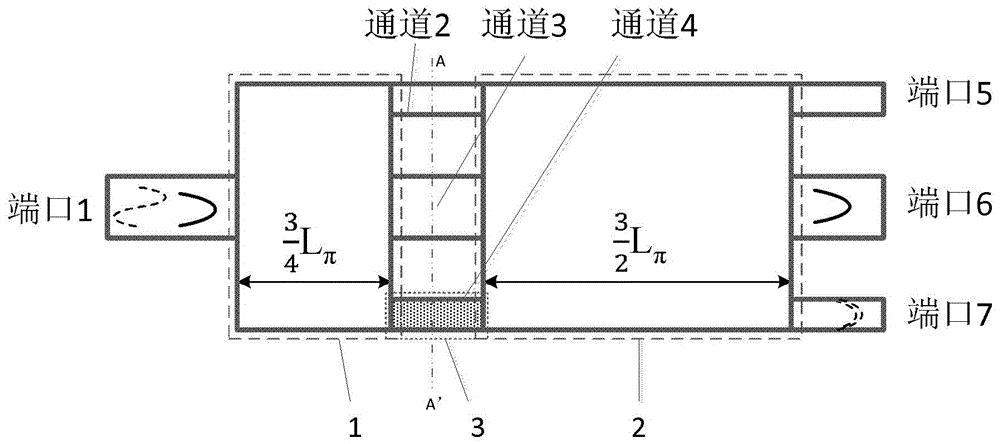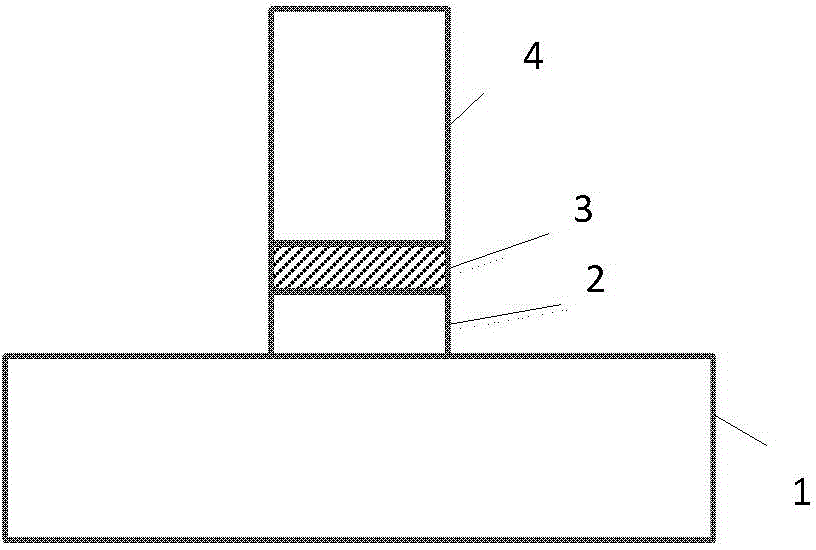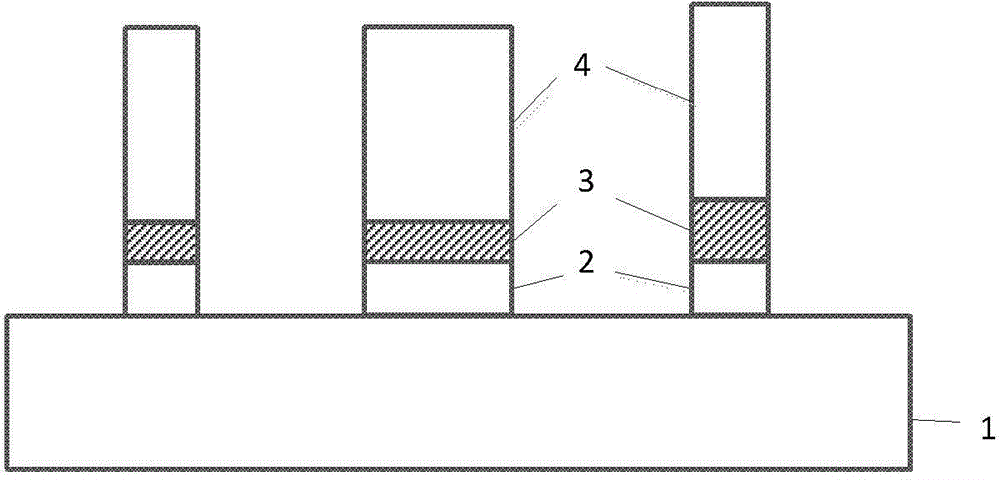InP-based mode division multiplexer/demultiplexer structure based on multimode interference coupler
A multi-mode interference and demultiplexer technology, applied in the field of InP-based waveguide devices, can solve problems such as incoupling
- Summary
- Abstract
- Description
- Claims
- Application Information
AI Technical Summary
Problems solved by technology
Method used
Image
Examples
Embodiment 1
[0020] A mode-division multiplexer / demultiplexer structure based on a multimode interference coupler that realizes a π / 2 phase shift difference by increasing the effective refractive index of the phase shift region.
[0021] Such as figure 2 and image 3 As shown, the epitaxial material structure of the device is described as follows: First, an N-type InP buffer layer ② (thickness is 500nm) is epitaxially applied to an N-type InP substrate ①, and a 300nm-thick InGaAsP waveguide core layer ③ (with a bandgap wavelength of 1.3μm , and lattice-matched with InP), a 20nm-thick non-doped InP etch-stop layer, and a 100nm-thick InGaAsP waveguide core layer③ (its bandgap wavelength is 1.3μm, and it is lattice-matched with InP). Next, the 100nm-thick InGaAsP waveguide core layer in other regions except the phase shift region is etched away by photolithography and wet selective etching. Then second epitaxial 1.7μm thick non-doped InP waveguide capping layer ④.
[0022] figure 1 Dimen...
Embodiment 2
[0025] A mode-division multiplexer / demultiplexer structure based on a multimode interference coupler that achieves a π / 2 phase shift difference by reducing the effective refractive index of the phase shift region;
[0026] Such as figure 2 and Figure 4 As shown, the epitaxial material structure of the device is described as follows: First, an N-type InP buffer layer ② (thickness is 500nm) is epitaxially applied to an N-type InP substrate ①, and a 300nm-thick InGaAsP waveguide core layer ③ (with a bandgap wavelength of 1.3μm , and it is lattice-matched with InP), a 20nm-thick non-doped InP etch-stop layer, and a 100nm-thick InGaAsP waveguide core layer③ (its bandgap wavelength is 1.3μm, and it is lattice-matched with InP). Next, the 100nm-thick InGaAsP waveguide core layer in the phase shift region is etched away by photolithography and wet selective etching. Then second epitaxial 1.7μm thick non-doped InP waveguide capping layer ④.
[0027] figure 1Dimensions of the vari...
PUM
 Login to View More
Login to View More Abstract
Description
Claims
Application Information
 Login to View More
Login to View More - R&D
- Intellectual Property
- Life Sciences
- Materials
- Tech Scout
- Unparalleled Data Quality
- Higher Quality Content
- 60% Fewer Hallucinations
Browse by: Latest US Patents, China's latest patents, Technical Efficacy Thesaurus, Application Domain, Technology Topic, Popular Technical Reports.
© 2025 PatSnap. All rights reserved.Legal|Privacy policy|Modern Slavery Act Transparency Statement|Sitemap|About US| Contact US: help@patsnap.com



